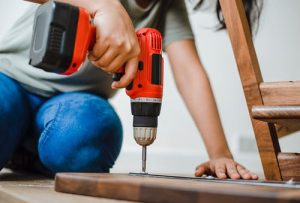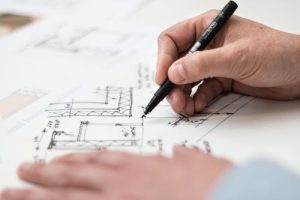Have you ever discovered a patch of fuzzy, colorful growth on a damp corner of your house and wondered what it was? That, my friend, is mold, a fungus that can grow outdoors and indoors, particularly in moist and warm conditions. While mold plays a crucial role in nature by breaking down dead organic matter, its presence indoors can harm health and the structure of buildings. This brings us to many homeowners’ common dilemma: mold removal vs. mold remediation. Let’s explore the differences and everything else you need to know.
Mold Removal vs. Mold Remediation
At first glance, mold removal and remediation might seem interchangeable terms. Indeed, they both aim to tackle mold issues within homes and buildings. However, it is crucial for every homeowner to grasp the significant difference between these two processes. Mold removal focuses on the physical elimination of mold, whereas remediation encompasses identifying, removing, and preventing mold, addressing both the current issue and its underlying causes.
Mold Removal
Mold removal is exactly what it sounds like – eliminating mold from a home or building. The focus here is on the word ‘removal.’ This procedure eliminates visible mold and cleans up the affected areas. However, mold remediation San Clemente experts would tell you that merely removing visible mold doesn’t address the underlying issue of how and why the mold appeared in the first place. A critical point to remember is that mold spores are microscopic and can remain in the air, invisible to the naked eye even after a thorough cleaning.
Mold Remediation
Mold remediation, on the other hand, goes several steps further than just removal. This comprehensive approach seeks not only to eliminate visible mold but also to address the source of moisture causing mold growth, thus helping to prevent future occurrences. Remediation involves a series of steps:
-
Inspection and mold damage assessment
-
Mold containment
-
Air filtration
-
Removing mold and mold-infested materials
-
Cleaning belongings and other restorable items
-
Restoring damaged areas to their original condition
Why Can’t We Just Remove Mold and Call It a Day?
You might think that removing mold is enough to solve your problem. But here’s the thing – mold is a symptom of a more significant issue. Without addressing the root cause, such as a moisture problem, mold will likely return, possibly with a vengeance. Professionals advocate for a more holistic approach, including remediation, to deal with mold issues effectively.
Health Risks Associated with Mold
Before we look deeper into the intricacies of mold remediation, it’s essential to understand why mold should not be taken lightly. Mold exposure can lead to a range of health issues, especially for those with allergies, asthma, or compromised immune systems. Some common health problems include:
-
Respiratory problems
-
Skin irritation
-
Eye irritation
-
Nose and throat discomfort
-
Possible cognitive problems in severe cases
When to Call in the Professionals
While some minor mold issues can be tackled with DIY methods, most problems require professional intervention. Seeking help from specialists ensures that the job is done safely and effectively, minimizing health risks and preventing recurrences. If you need clarification on whether your mold situation warrants professional help, it’s always better to consult experts for peace of mind.
Once mold remediation is completed, the next step is often property restoration. This involves repairing or replacing materials and structures damaged by mold. Professionals like PuroClean restoration specialists are equipped to handle the restoration process, ensuring your property is returned to its pre-mold condition as much as possible. This may involve structural repairs, painting, and replacing flooring or drywall.
The Mold Remediation Process
Mold remediation isn’t a one-size-fits-all solution. The process can vary depending on the extent of mold damage and the areas affected. However, a general outline of the remediation process includes:
-
Conducting a thorough inspection to identify mold sources and affected areas.
-
Creating a remediation plan that outlines the steps needed to remove the mold and prevent future growth.
-
Containing the area to prevent mold spores from spreading during cleanup.
-
Cleaning or removing mold-infested materials and belongings.
-
Repairing and restoring the affected areas to their former condition.
A Precursor to Mold Remediation
It’s often the case that mold growth results from water damage. Addressing any water issues is a critical precursor to effective mold remediation. Services specializing in water damage San Clemente can help identify the source of moisture and implement solutions to prevent future water damage and, by extension, mold growth. This step is crucial in creating a dry and healthy mold-free environment.
Final Thoughts
Understanding the difference between mold removal and mold remediation is crucial for effectively dealing with mold issues. While removal may provide a temporary solution by eliminating visible mold, remediation tackles the problem at its root, addressing moisture issues and preventing future growth. Remember, the goal is not just to clean up the mold but to ensure it doesn’t return. By prioritizing long-term solutions and, when necessary, calling in professionals, you can protect your home and health from the impacts of mold.





